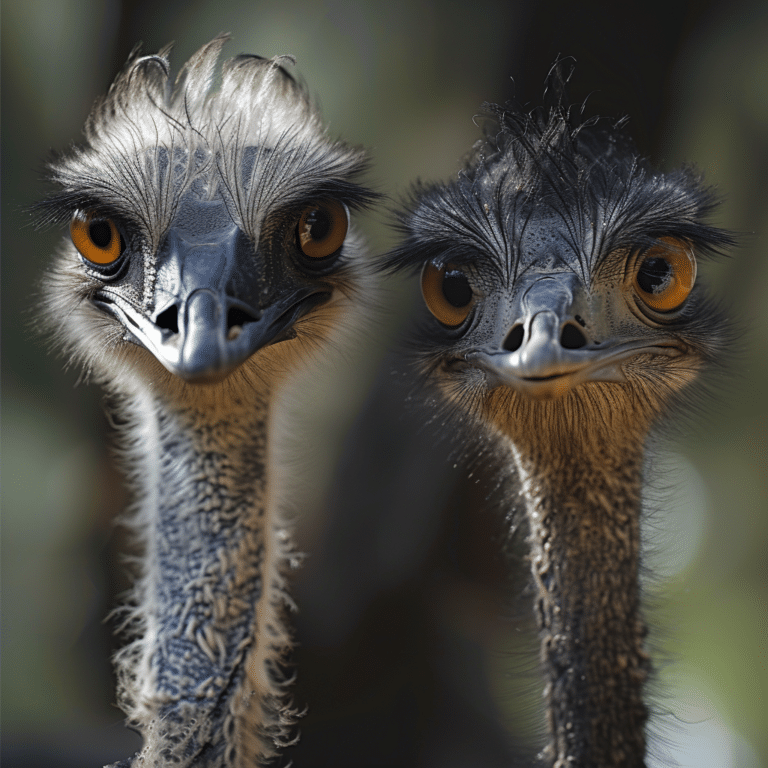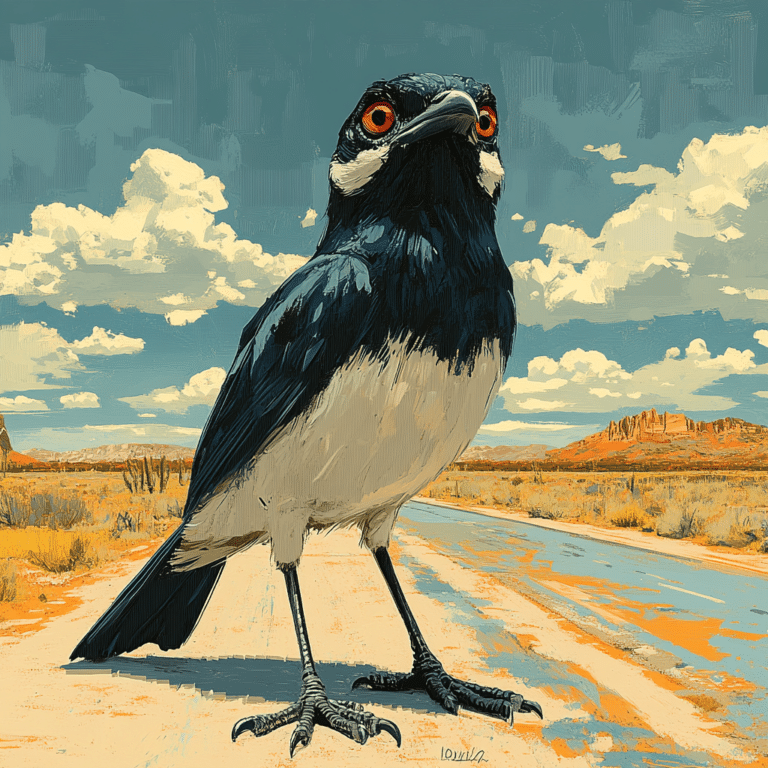Unveiling the Giants: The Startling Truth of Ostrich vs Emu
Imagine stepping into the arid savannas of Africa, the sun high and fierce, when suddenly, a massive creature storms past you, its footsteps pounding the ground like muffled thunder. Now shift your vision to the Australian bush, where the breeze carries the distinct sound of a different, but no less formidable avian giant. Yes, we’re talking about ostriches and emus, those titans of the bird kingdom that have captured our fascination and left us in awe.
Ostriches and emus hail from different corners of the Earth. Proudly standing as the heavyweight of the bird world, the ostrich is native to Africa and roams the continent’s diverse landscapes. On the flip side, the emu—slightly less imposing but still impressive—claims Australia as its stomping grounds. Despite being worlds apart, these flightless wonders share a common ancestry that weaves a tail as intricate as the patterns on their feathers.
Digging into their distinguishing features, the contrasts are as stark as night and day. Ostriches are the taller of the two, with a stature that can reach a towering 9 feet, cloaked in darker feathers with bolder patterns, whereas emus max out around a still respectable 6 feet, their plumage a dance of more subtle hues. The emu’s neck, unlike the ostrich’s, isn’t a naked spectacle—it’s adorned in feathers. When it comes to appendages, emus flaunt three toes rather than the ostrich’s two, and while the ostrich boasts big wings, the emu’s are so short they might as well be an afterthought.
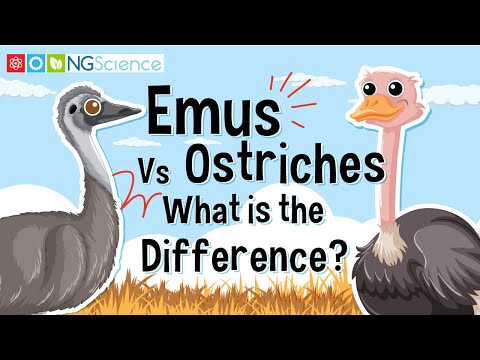
Speed and Stamina: Assessing Ostrich and Emu Locomotion
Fun fact: the ostrich is not just another pretty face with legs for days; it’s the Usain Bolt of the bird world, capable of hitting speeds that would leave your neighborhood speedster eating dust—up to 45 mph, to be exact. Talk about needing a speeding ticket! It’s as though nature looked at the ostrich and said, “You can’t fly, but boy, will you run!” Meanwhile, emus aren’t dragging their feet either—they can hustle up to a breezy 30 mph.
So, what’s the secret behind this high-octane performance? It’s all down to the biomechanics. Imagine these birds as two exceptionally well-tuned machines. Each limb, every muscle, and the leverage of their long legs are evolutionary marvels, fine-tuned for their high-speed escapades. These birds aren’t just winging it; they’re engineered for the fast lane.

| Feature | Ostrich | Emu |
|---|---|---|
| Scientific Classification | Struthioniformes, Struthionidae | Casuariiformes, Casuariidae |
| Chromosome Count | 80 | 82 |
| Native Habitat | Africa | Australia |
| Height | Up to 9 ft tall | Up to 6 ft tall |
| Weight | 220–290 lbs | 90–120 lbs |
| Wings | Two large, visible wings | Short, not easily distinguishable |
| Wing Use | Non-flight-capable | Non-flight-capable |
| Neck Feathers | Bare neck | Feather-covered neck |
| Body Feathers | Darker, denser plumage | Less dense, lighter plumage |
| Toes | Two | Three |
| Running Speed | Up to 45 mph | Up to 30 mph |
| Behavior Toward Humans | Less docile than emus | Generally more docile |
| Similarities | Both are flightless ratites | Both are flightless ratites |
The Behavioral Battleground: Ostrich vs Emu Social Dynamics
Now, picture the way these birds tango in their social soirees. You might think they’d both be social butterflies—the life of the party—but you’d be wrong. Contrary to what many believe, the social behaviors of ostriches and emus aren’t one and the same. Ostriches often gather in groups that could easily turn into a dancefloor ensemble if they were so inclined. They’re all about strength in numbers and, sometimes, a bit of drama.
Flip the coin, and you’ll find emus are more likely to roll solo or in small groups. They don’t need the crowd to feel complete. They might be the quieter ones at the gathering, but hey, ain’t nothing wrong with being content in your feathers.
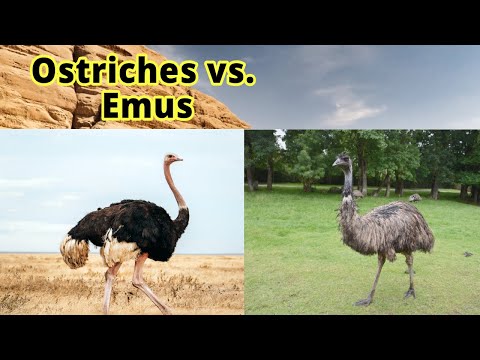
Diet and Foraging: Ostrich vs Emu Feeding Ecology
When chow time rolls around, ostriches and emus are far from picky eaters. Whether it’s plants, insects, or the odd small animal, they aren’t shy about tucking in. The ostrich, like a diner at the finest Brooklyn diner, has a refined palette and can process a wider variety of foods due to its extra height and reach.
Emus, don’t you worry, they have their own wedge shoes strategy, so to speak. Shorter necks mean they’re closer to the ground, making them experts in ground-level cuisine. The upshot? Both birds play pivotal roles in their environments—aiding in seed dispersal and pest control, making them unsung heroes of their ecosystems.
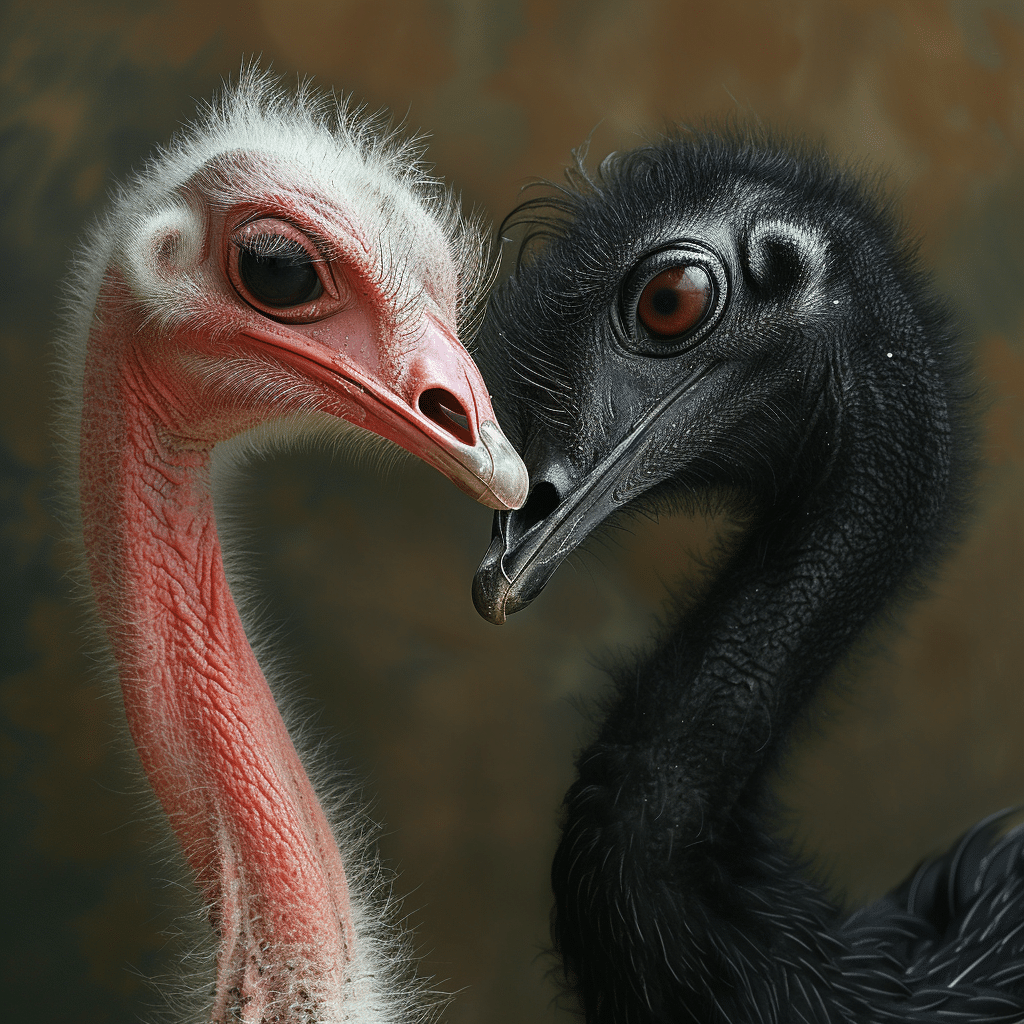
Reproduction Riddles: Breeding Habits of Ostriches and Emus
The birds and the bees tales of our flightless friends sure make for interesting pillow talk. Ostriches are all about the glam and the glitz; their courtship rituals are like something straight out of a fairytale—think along the lines of Beauty And The Beast belle meets the ballroom. Emus? They’re a tad more practical. Simple and sweet, they prefer a good ol’ straightforward approach to matchmaking.
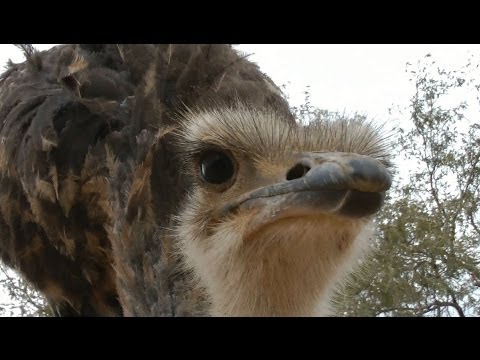
Survival Instincts: Ostrich vs Emu Predator Evasion Techniques
When the going gets tough, and predators come knockin’, both birds have a few tricks tucked under their feathers. Ostriches may as well have perfected the ancient art of “run like the wind,” coupled with a powerful kick that could send any would-be attacker thinking they’ve just met Sean Paul reyes in the form of a bird.
Emus, those crafty survivors, are more about the subtle art of evasion—think cooler heads prevailing Against The sun latino style. They’ve mastered the swift zigzag, leaving predators in a dizzy tizzy as they dash to safety.
Farming and Domestication: Human Use of Ostriches and Emus
Oh, but let’s not forget that humans have found numerous uses for our feathered companions. From the luxurious swirl of ostrich feathers to the rich emu oil, these birds are more than just a pretty sight in the wild.
Farming these birds has become an industry with its fair share of H&R Block complexities. Behind that lovely feather or that bottle of oil is a business that requires meticulous planning and strategy. As for the emu, it has become a staple for those in the know, its products lauded for their many benefits.
Beyond the Feathers: Ostrich vs Emu in Cultural Significance
Ruffling some cultural feathers, it’s clear these birds aren’t just wandering the wilderness; they’ve trotted into our myths and stories too. In some cultures, the ostrich symbolizes truth and purity, whereas the emu might embody perseverance—a living emblem of the indivisible meaning of enduring all that life throws your way.
From artwork that dates back centuries to recent films that give these birds a nod, ostriches and emus have made their mark on humanity’s canvas, each feather a brushstroke on the world’s story.
Innovative Approaches to Ostrich and Emu Conservation
Both ostriches and emus face the brunt of habitat loss and other human-made challenges. But fear not, for the cavalry has arrived in the shape of modern conservation efforts. Groundbreaking organizations employ the latest Xana Kernodle methods and techniques to ensure our avian giants continue to roam free. Community involvement and technology go hand-in-wing to turn the tide in their favor.
Conclusion
Diving deep into the world of ostrich vs emu, we’ve unraveled intriguing facts that highlight their profound uniqueness. Reflecting on these differences, we gain a new appreciation for the diverse tapestry of life they represent.
It’s a rich story—of evolution, behavior, and the delicate ballet of existing on this planet. In thinking about what’s to come for these creatures, we hope for a narrative that allows them to thrive, for they are more than just birds—they are irreplaceable threads in the intricate web of biodiversity. Their future, much like ours, hangs in the balance of the choices we make and the respect we show to the natural world. Let’s ensure the tale of the ostrich and the emu is one of continued legacy, not a lament for what was lost.
Ostrich vs Emu: The Ultimate Bird Battle
Hold onto your feathers, folks, because we’re about to ruffle through some seriously mind-boggling trivia where the ostrich vs emu debate takes flight. These aren’t your backyard tweeters; we’re talking about the heavyweights of the bird kingdom. So, let’s spread our wings and dive beak-first into the wild world of these flightless wonders.
Speedsters of the Savanna and Outback
First off, let’s talk about the need for speed. Ostriches are the Usain Bolts of the bird world, folks! With those long, powerful legs, an ostrich can sprint faster than a hyena chasing a three-course meal, reaching speeds up to a staggering 45 mph. Meanwhile, the emu isn’t exactly draggin’ its claws either. These Aussie birds can lope along at a respectable 30 mph, which, let’s be honest, could still leave you huffing and puffing in a cloud of dust.
The Big Bird Eggstravaganza
Now, here’s something that’ll knock your socks off: the egg factor. When an ostrich pops out an egg, it’s like dropping a cantaloupe that could feed a family! Weighing about 3 pounds, these are the largest eggs in the world. On the other hand, emus throw a curveball with their green eggs. No, not ready for a Dr. Seuss book—the emu’s eggs are emerald green! While not as hefty as their African cousins’ eggs, they still tip the scales at around 2 pounds. That’s like carrying a whole “h&r block” of weight. Which bird wins for best egg? That’s a scramble!
Neck and Neck… Literally
And, would you believe it, these birds’ necks tell tales of their own! An ostrich owns a graceful, slender neck that’s long enough to earn it comparisons to ballerinas (in looks, not dance moves!). But flip the globe to Australia, and the emu’s neck would have you saying it’s like the scruffy cousin who forgot to shave. Sportin’ a shaggy feather coat, it’s thick and…well, let’s just say you wouldn’t mistake it for a swan’s.
Pecking the Tunes
Whisper this one—it’s a secret not many know. Emus have a hidden talent somewhere within those fluffy feathers—a drumming voice. Yep, they can belt out a deep, resonating drumroll that’s more rhythmic than your neighbor’s garage band practice. Ostriches? They like to boom, hiss, and snort like the life of the party who just can’t settle on one tune. When it comes to making themselves heard, neither bird is exactly a songbird, but they sure know how to make themselves heard.
A Feathery Tug-o-War
Let’s flutter over to fashion for a second, shall we? If we’re talking feathers, both birds flaunt some fancy plumage. Ostriches sport a classic black and white tuxedo look, which makes them quite the dandies of the dunes. As for emus, they prefer the shabby chic style with brown feathers that give them that “just rolled out of a haystack” vibe. But those feathers aren’t just for looks; they’re a nice, cozy blanket for those chilly desert nights in the outback.
The Longevity Lowdown
Ever wondered which bird clocks more time on Mother Earth? Ostriches peck up the win here, with a lifespan hanging around 40-45 years. Imagine all the birthday candles! Meanwhile, emus strut the globe for about 20-30 years, which ain’t bad for a bird that can’t book a spa retreat.
Solitary vs Social
Wrapping up our bird battle, let’s peck at their social calendars. Ostriches are the social butterflies of the savanna, living in flocks that can hit up 100 members during breeding season. Talk about your wild parties! Emus? They prefer a more intimate gathering, often seen rocking a solitary lifestyle or hanging with a small posse.
Well, there you have it—a collection of trivia that’s sure to ruffle the feathers of any bird enthusiast. Whether you’re team ostrich or emu, you’ve gotta admit—these birds are no featherweights in the ring of intrigue. Just remember, when it comes to the ostrich vs emu showdown, it’s always a fair peck for both sides!
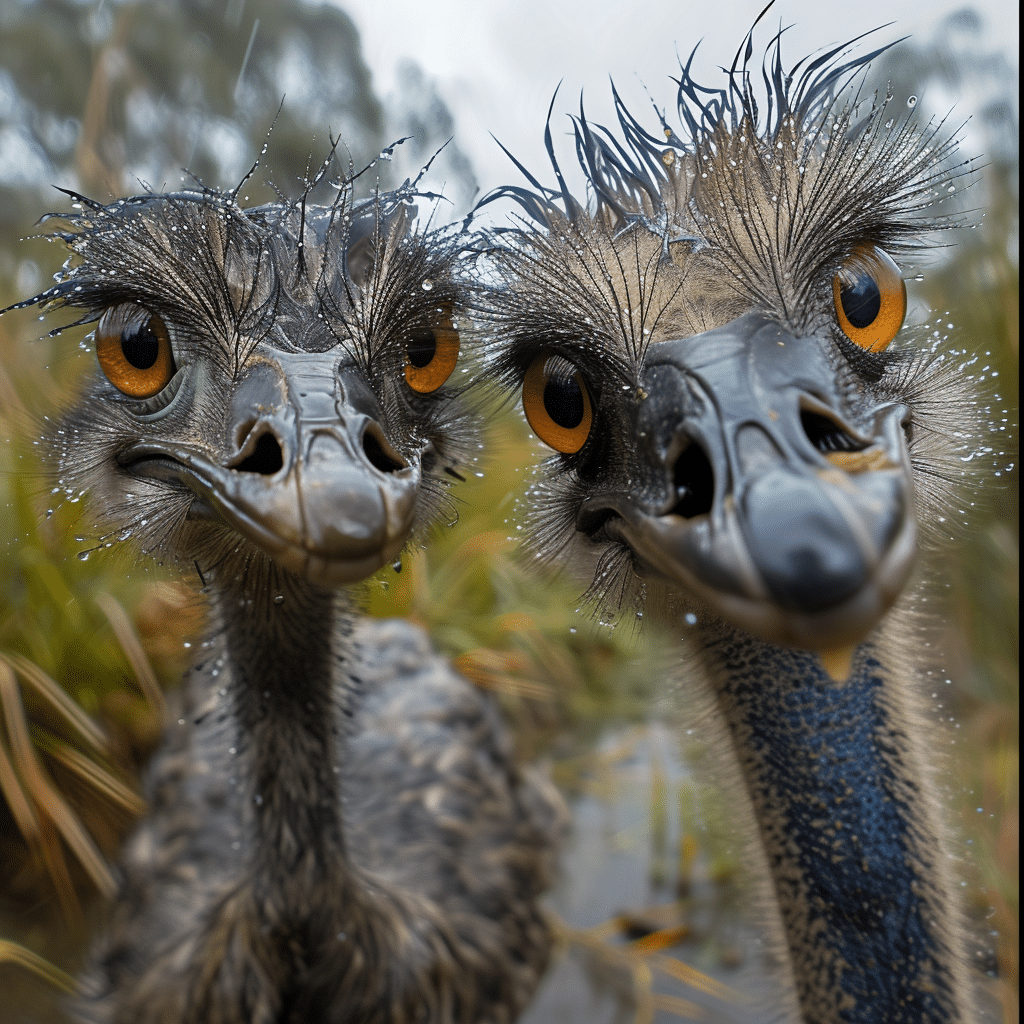
What’s the difference between ostriches and emus?
What’s the difference between ostriches and emus?
Well, for starters, size does indeed matter here! Ostriches are the tall blokes of the bird world, standing proud at 9 ft, towering over the 6 ft emus. Hailing from Africa, ostriches rock darker feathers and sport two big, albeit flightless, wings. Emus, on the flip side, calling Australia home, flaunt shorter, less noticeable wings and a feather-covered neck—none of that naked neck business like their African cousins. And don’t get me started on their toes – emus tip-toe on three, while ostriches balance on two! (Oct 21, 2019; Apr 26, 2023)
Who would win ostrich or emu?
Who would win ostrich or emu?
If we’re talking about a footrace, ostriches would leave emus eating their dust, zooming up to a blistering 45 mph. Emus aren’t slackers, though, they can sprint at a respectable 30 mph. But, if it’s a tussle you’re thinking of—let’s just say it’s a good thing they’re continents apart!
Are emus friendlier than ostriches?
Are emus friendlier than ostriches?
You could say that emus are the less prickly of the two. They’re generally seen as more docile and might play nicer with us humans compared to their distant relatives, the ostriches. But hey, “friendly” in the bird world is still a long way off from man’s best friend, so take that with a grain of salt. (Aug 7, 2019)
Can emu breed with ostrich?
Can emu breed with ostrich?
Nope, when it comes to making little bird babies, emus and ostriches can’t mix and match. They’re not in the same birdy circles, with emus in one family tree and ostriches in another. Plus, they’ve got a different number of those tiny DNA packages, chromosomes. It’s like apples trying to breed with oranges! (Feb 12, 2019)
Why can’t emus and ostriches fly?
Why can’t emus and ostriches fly?
Ah, the age-old question! These feathery beasts are grounded because Mother Nature traded their flying tickets for other perks. Their wings are either too small or not built for the skies, and with their heavy bodies, they’d have about as much luck flying as a hippo. Evolution’s got a sense of humor, it seems!
Can you eat emu eggs?
Can you eat emu eggs?
You betcha! Emu eggs are like the jumbo jets of the egg world – big, green, and totally edible. Whip one up, and you’ve got an omelet that’ll feed a crowd or at least a very hungry you.
Can a human outrun an emu?
Can a human outrun an emu?
Oh boy, chance would be a fine thing! An emu can bolt up to 30 mph, leaving us mere mortals huffing and puffing in the dust. Better work on those sprinting skills if you’re planning to outrun one of these feisty birds! (Nov 29, 2022)
Are emus as aggressive as ostriches?
Are emus as aggressive as ostriches?
Emus and ostriches can both have their grumpy days, but emus tend to be less aggressive towards humans. Still, it’s wise to give them their space – you wouldn’t want to ruffle their feathers, now would you?
Can emus be aggressive?
Can emus be aggressive?
Sure can! While generally more chilled than ostriches, emus have their moments too. Don’t be fooled by their docility – an unhappy emu can throw a real hissy fit!
Can emus be pets?
Can emus be pets?
Believe it or not, you can have an emu as a pet, but let’s just say it’s not for everyone. These feathery giants need space to roam, and they aren’t exactly lap birds. So think bigger than a backyard chicken coop – emus are like farm animals with an extra dose of sass.
How intelligent are emus?
How intelligent are emus?
Emus are pretty savvy for birds. They’re not genius-level, sure, but they’ve got enough smarts to survive in the wild, find food, and evade danger. So, while they won’t be solving puzzles anytime soon, they’re not bird-brained, either!
Are emus affectionate to humans?
Are emus affectionate to humans?
Affectionate might be pushing it – emus aren’t exactly the cuddly type. They might tolerate humans, especially if they’ve been raised around them. But expecting a feathery hug when you get home is setting yourself up for disappointment.
Can you raise emus in the US?
Can you raise emus in the US?
You bet! Emus have been raised stateside for their meat, oil, and leather. As long as you’ve got the space and know-how to care for these large birds, you can totally have a gaggle – or should I say, a mob – of emus in the Land of the Free!
What is the lifespan of an emu?
What is the lifespan of an emu?
These Aussie birds can be in for the long haul, with life expectancies reaching up to 20 years. So, getting an emu pal is a long-term commitment – that’s a lot of bird birthdays to celebrate!
What can emus not eat?
What can emus not eat?
Emus are pretty hardy when it comes to chowing down, but like any animal, there are no-nos. Feeding them toxic plants, lead, or stuff that’s not part of their natural diet is a recipe for trouble. Stick to what they’d scrounge in the wild and commercial emu feeds, and you’ll keep them happy as Larry.
Can you eat emu meat?
Can you eat emu meat?
Absolutely, emu meat’s not just edible, but it’s also quite the lean, mean protein source. Its taste? Think of it as a cross between beef and venison – a wild twist on the usual meats.
Is emu meat like ostrich meat?
Is emu meat like ostrich meat?
Emu and ostrich meats are kissing cousins in the exotic meat department. They’re both lean, red, and have a beefy taste with a wild game kick. So, if you’re feeling adventurous at the dinner table, both are worth a try!
Are emus and ostriches genetically related?
Are emus and ostriches genetically related?
While emus and ostriches are both part of the ratite family reunion, they’re not close genetic buddies. Different orders, different families, and even different chromosome counts. It’s like they’re from different branches of the feathered family tree. (Feb 12, 2019)
Do emus and ostriches lay eggs?
Do emus and ostriches lay eggs?
Well yeah, that’s their MO for keeping the family line going. No storks delivering baby birds here! Emus lay dark green eggs, while ostriches go for the classic, though rather large, off-white variety. And remember, omelet lovers, these eggs are much bigger than your average chicken egg!

